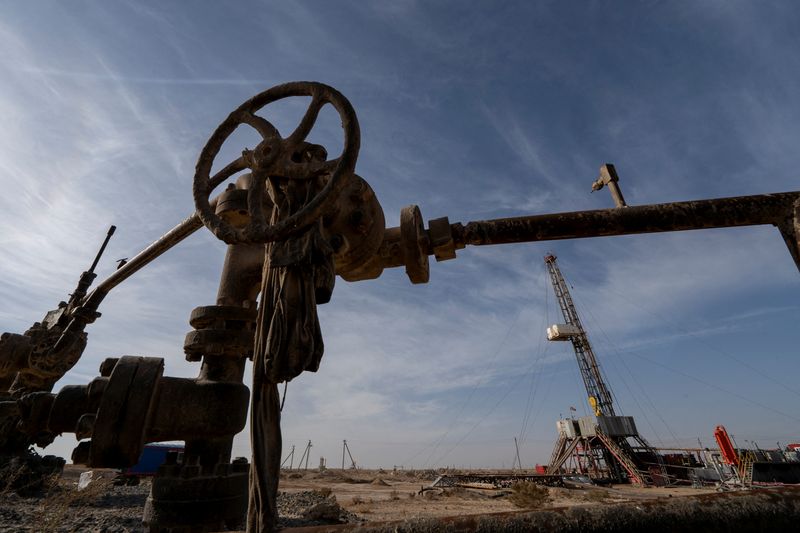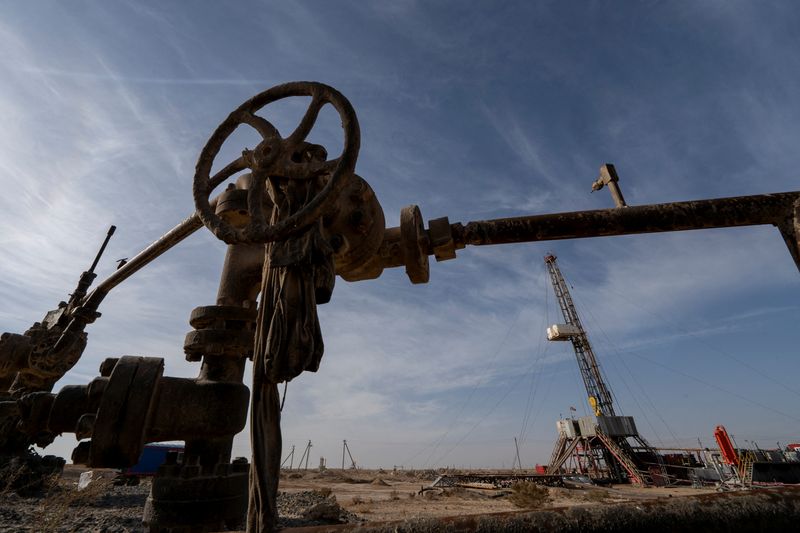
By Noah Browning
LONDON (Reuters) -Oil prices fell by more than $1 on Friday, remaining on course for a fourth successive weekly drop after data showed the U.S. economy added fewer jobs than expected in July, further clouding the outlook for economic growth and crude demand.
Brent crude futures fell $1.41, or 1.8%, to $78.11 a barrel by 1310 GMT. U.S. West Texas Intermediate crude futures were down $1.59, or 2.1%, at $74.72.
Both benchmarks have fallen around 10% over the past four weeks in the longest run of weekly losses this year.
U.S. job growth slowed more than expected in July as unemployment increased to 4.3%, pointing to possible weakness in the labor market and greater vulnerability to recession.
“Weak economic growth in major economies could stifle oil demand despite increased tensions in the Middle East that could impact supplies,” said Panmure Liberum analyst Ashley Kelty.
Economic data from top oil importer China and a survey showing weaker manufacturing activity across Asia, Europe and the United States raised the risk of a sluggish global economic recovery that would weigh on oil consumption.
Falling manufacturing activity in China also inhibited prices, adding to concerns about demand growth after June data showed imports and refinery activity lower than a year earlier.
Asia’s crude oil imports in July fell to their lowest in two years, sapped by weak demand in China and India, data from LSEG Oil Research showed.
Meanwhile, an OPEC+ meeting on Thursday left the group’s oil output policy unchanged, including a plan to start unwinding one layer of production cuts from October.

Oil investors are also monitoring developments in the Middle East, where the killing of senior leaders of Iran-aligned militant groups Hamas and Hezbollah stoked fears that the region could be on the brink of all-out war, threatening to disrupt supplies.
Lebanon’s Iran-backed group Hezbollah said its conflict with Israel had entered a new phase and pledged a response after its top military commander was killed in an Israeli strike.
This post is originally published on INVESTING.



